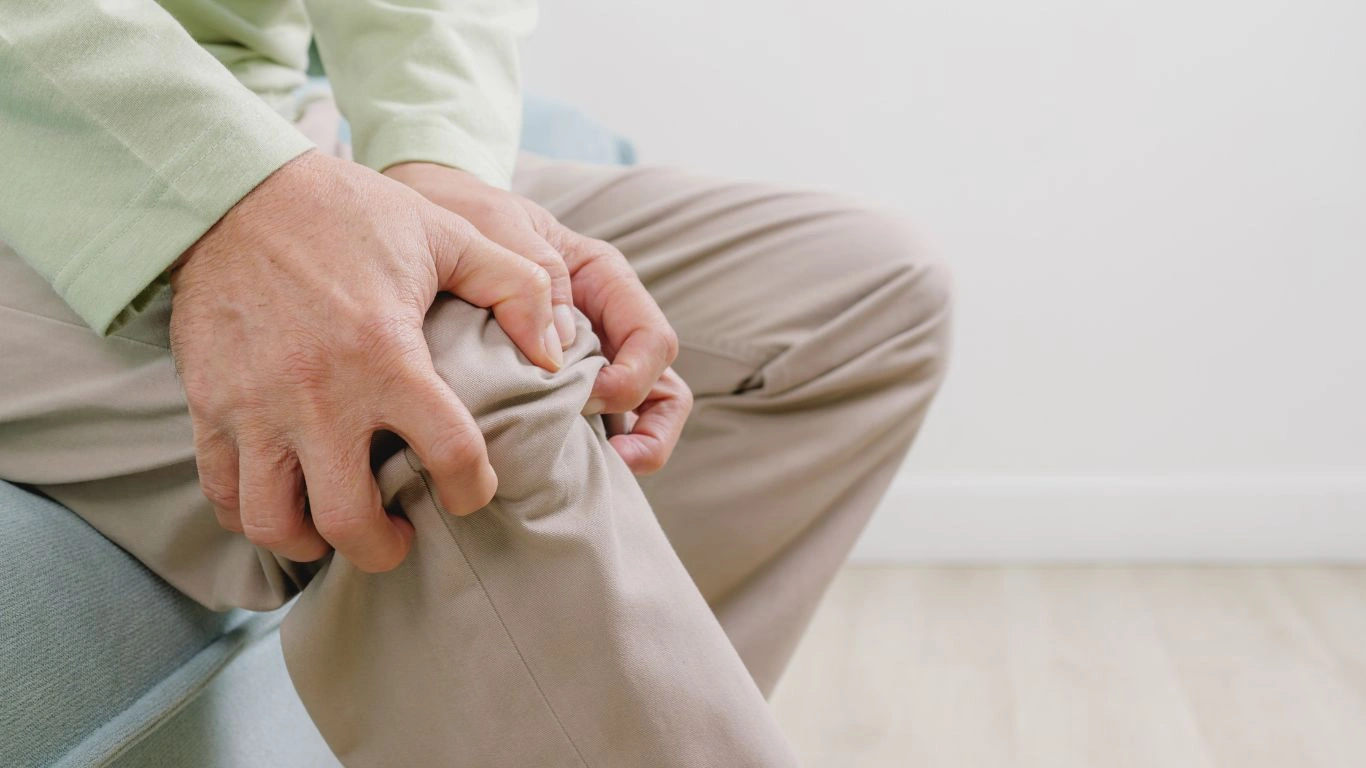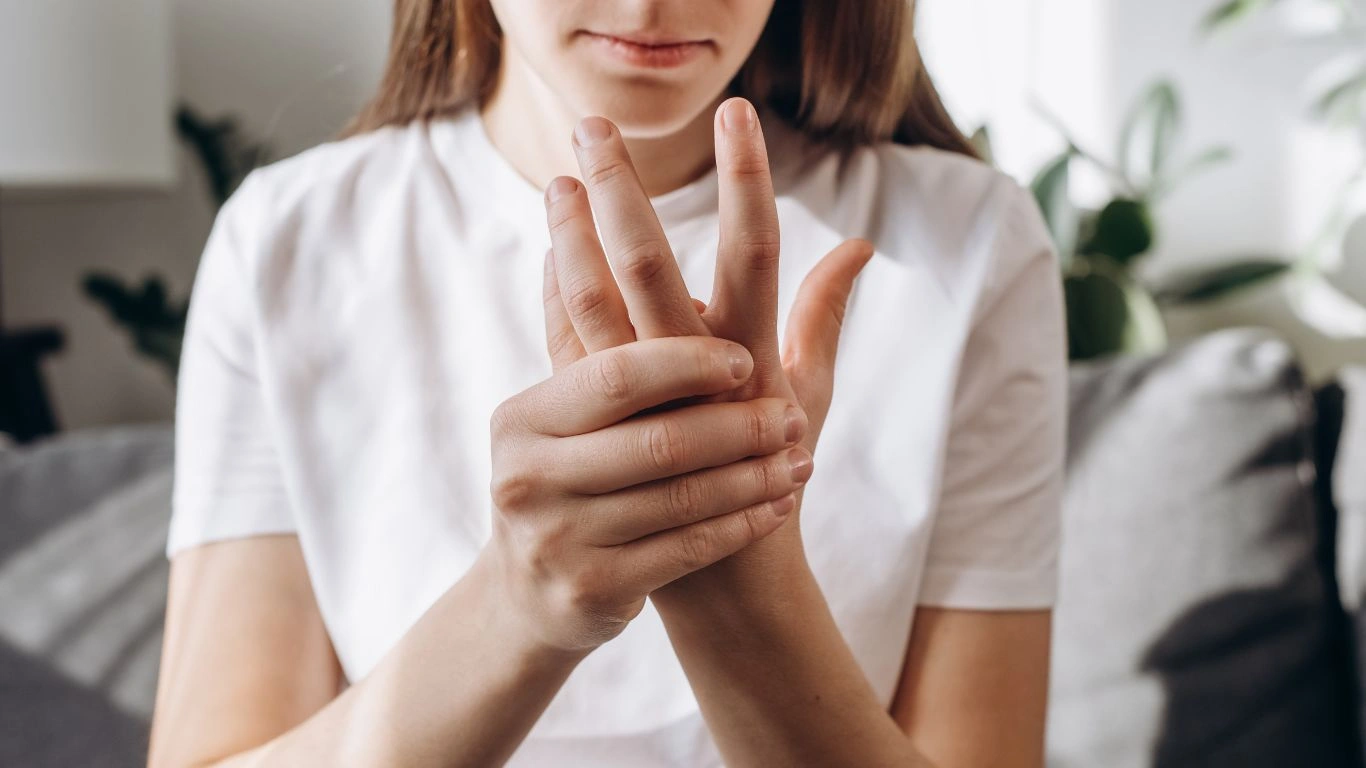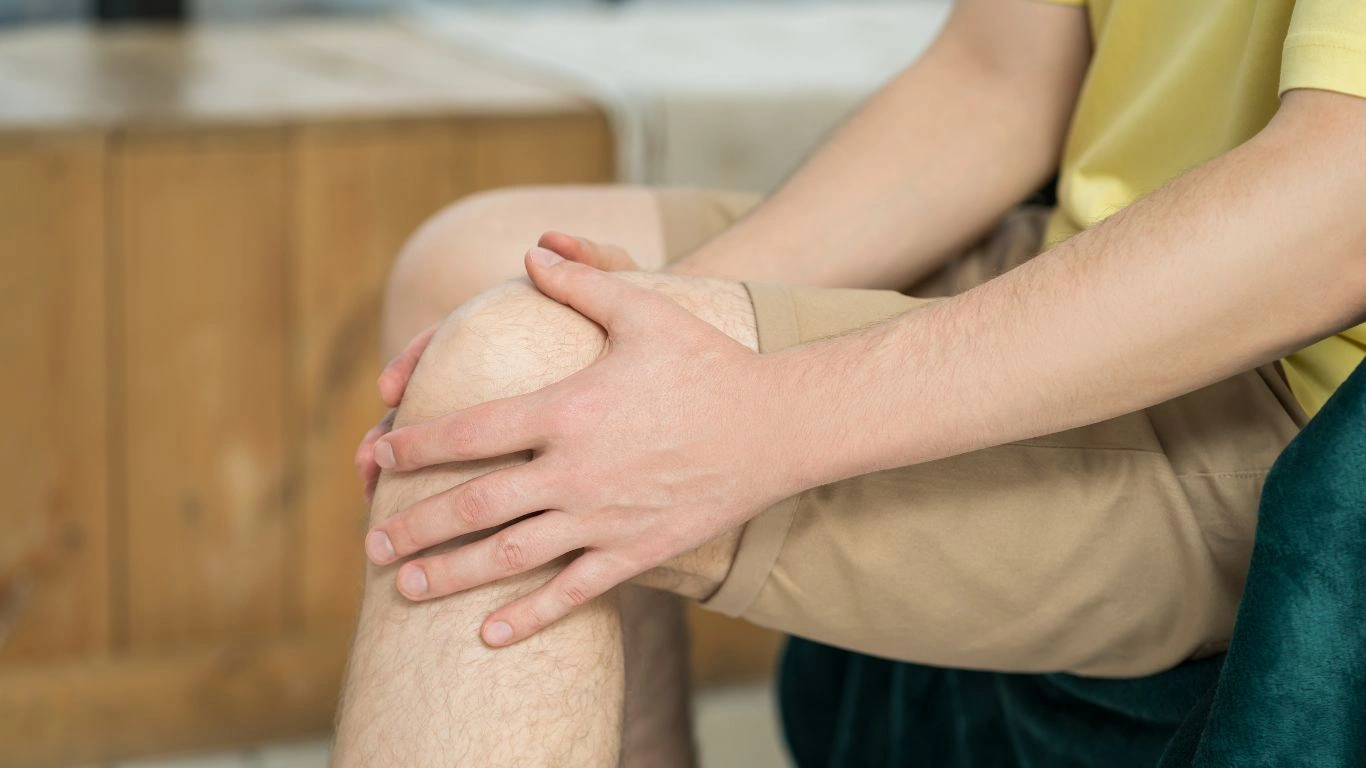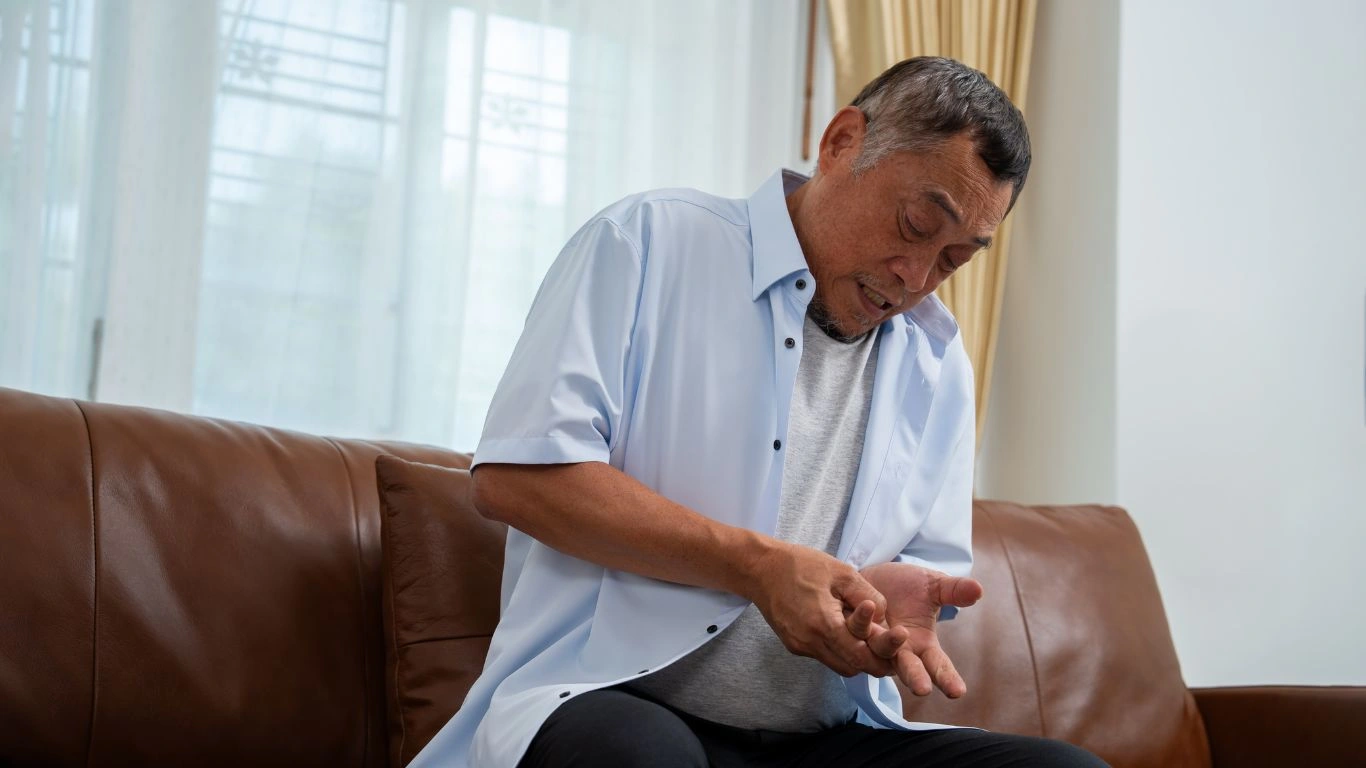Effective Heat Wraps for RA Joints to Soothe Pain and Stiffness
If you’ve ever lived with rheumatoid arthritis (RA), you know how stubborn joint pain and stiffness can be, especially when the weather turns chilly or after a long day on your feet. Over the years, working closely with patients as a Rheumatology nurse practitioner, I’ve seen firsthand how simple tools like heat wraps can offer soothing relief right where it’s needed most. Heat wraps for RA joints aren’t just a comfort—they can be an important part of managing symptoms and improving daily function.
Why Heat Wraps Are a Game-Changer for RA Joints

Rheumatoid arthritis is an autoimmune condition where your body’s immune system mistakenly attacks the lining of your joints, causing inflammation, pain, and swelling. This inflammation can make simple tasks feel like a challenge and often leaves joints feeling stiff—especially in the mornings or after inactivity. That’s where heat therapy comes into play.
Heat wraps provide targeted warmth, which helps to increase blood flow, relax tight muscles, and reduce stiffness around the joints. I always recommend them as a non-invasive, drug-free option to complement medication and physical therapy. The warmth can ease those morning aches or help unwind tense joints after a busy day.
How Heat Wraps Work for RA
When you apply a heat wrap, it penetrates the skin gently but deeply enough to:
- Improve circulation—better blood flow means more oxygen and nutrients reach the joint tissues, which can aid in healing and reduce inflammation.
- Loosen muscles and tendons around the joint, which often get tight from compensating for pain.
- Reduce stiffness by increasing the elasticity of the connective tissues, making movement easier and less painful.
From my clinical experience, patients often report that heat wraps help them regain some mobility, even if just temporarily, which can be a huge morale booster.
Types of Heat Wraps and When to Use Them
There’s a variety of heat wraps available, and choosing the right one depends on your lifestyle and symptoms. Here are the common types I suggest:
- Electric heat wraps: These provide consistent heat and often have adjustable temperature settings. They’re great for longer sessions at home or work.
- Microwavable heat wraps: Filled with grains or gel packs, these wraps are convenient and portable—just heat them up in the microwave before use.
- Disposable heat wraps: Perfect for on-the-go relief, these single-use wraps activate when exposed to air and last several hours.
My personal tip? Keep a couple of different types handy. For example, a microwavable wrap is perfect for relaxing in the evening, while a disposable one can provide discreet warmth during a day out.
When and How to Use Heat Wraps Safely

Even though heat wraps feel natural and comforting, it’s important to use them wisely to avoid skin irritation or burns. Based on my years of guiding patients, here are some simple safety pointers:
- Check your skin frequently during use to make sure it’s not too hot or red.
- Limit use to 15-20 minutes per session, especially when starting out, to prevent overheating the skin.
- Avoid heat on swollen or bruised areas, as this can worsen inflammation.
- Never use heat wraps on broken skin or where sensation is reduced.
For people with RA, I also recommend pairing heat wraps with gentle stretching or light movement right after removing the wrap. This helps maintain the improved joint flexibility and reduces morning stiffness.
Personal Experience: What My Patients Say
Many patients tell me that incorporating heat wraps into their routine was a “game-changer” for managing daily discomfort. One of my longtime patients, who struggled with painful wrist joints, shared how using a heat wrap before starting her workday reduced stiffness enough to improve her typing and handwriting. Stories like hers highlight how these simple tools can make a tangible difference.
Benefits Beyond Pain Relief

Besides easing pain and stiffness, heat wraps for RA joints may offer some surprising benefits:
- Improved sleep quality: Many with RA struggle to fall asleep due to joint discomfort. Using heat wraps before bed can help relax the body and calm aches.
- Stress reduction: Warmth has a natural calming effect on the nervous system, helping reduce stress levels that might otherwise amplify pain perception.
- Enhanced effectiveness of physical therapy: Applying heat before exercises can prepare joints and muscles, making therapy sessions less painful and more productive.
In clinical practice, combining heat therapy with other treatments often leads to better overall management of RA symptoms, something I always encourage patients to explore.
Choosing the Right Heat Wraps for Your RA Joints

Now that we’ve talked about how heat wraps work and their benefits, let’s get into how you can pick the right ones for your RA joints. With so many options on the market, it can feel a bit overwhelming, but trust me—finding the best fit for your needs can make all the difference.
What to Look for When Buying Heat Wraps
From my years in rheumatology, I’ve noticed a few key features that can really elevate your experience with heat wraps:
- Adjustable heat settings: Having control over how warm the wrap gets is crucial. RA symptoms can vary day-to-day, so sometimes you might want gentle warmth, other times a bit more intense relief.
- Comfort and fit: Since RA often affects tricky areas like wrists, knees, and shoulders, look for wraps that mold well to those joints without slipping or feeling bulky.
- Ease of use: Especially if you have hand stiffness, choosing wraps that are simple to put on and take off can save a lot of frustration.
- Durability and cleaning: Reusable wraps are great, but check if they’re machine washable or come with washable covers—hygiene matters, especially if you’re using them regularly.
My Favorite Heat Wraps for RA Patients
Over time, I’ve gathered a few personal favorites that consistently get positive feedback from my patients:
- Thermal electric wraps with flexible heating pads—these offer steady, controllable heat and are especially good for home use.
- Microwavable wraps filled with natural grains—I love these for their gentle, moist heat and the cozy feel. They’re also portable enough to take on trips.
- Disposable heat wraps that last several hours—perfect for workdays or when you’re out and about and need discreet warmth.
Just a heads-up: whenever you try a new type, test it for a short time first to see how your skin and joints respond.
Combining Heat Wraps with Other RA Management Techniques

Heat wraps don’t have to stand alone in your symptom toolbox. In fact, pairing them with other strategies can really boost your overall joint health and comfort. Here’s how I advise patients to combine heat therapy with other effective approaches:
Gentle Movement and Stretching
One of the biggest misconceptions about RA is that you should avoid moving painful joints. Actually, moving helps keep joints flexible and reduces stiffness over time. After using a heat wrap, when your muscles and tendons are relaxed, it’s the perfect time to do some gentle stretching or low-impact exercises like:
- Finger and wrist rotations
- Light yoga or tai chi
- Water-based exercises
In my clinic, patients who consistently use heat wraps before exercising often notice less pain during movement and faster recovery afterward.
Topical Treatments and Moisturizers
Adding topical treatments can enhance the soothing effect. For example, some patients find that applying a warming rub or an anti-inflammatory cream before wrapping up helps reduce discomfort further. Also, since heat can sometimes dry out the skin, moisturizing regularly keeps skin healthy and less prone to irritation.
Mental Health and Stress Relief
Living with RA isn’t just about physical symptoms; it can take a toll emotionally too. Stress can actually worsen pain perception, so I always encourage patients to take moments for themselves. Heat wraps can feel comforting and grounding, almost like a mini self-care ritual. Pair that warmth with deep breathing, meditation, or calming music, and you’ve got a powerful combo for both body and mind.
When Heat Wraps Might Not Be the Best Choice

While heat wraps are wonderful for many people with RA, there are times when they might not be the ideal solution. Here are a few situations to be cautious about:
- During active flare-ups with intense swelling: Inflammation that’s hot, red, or swollen might respond better to cold therapy instead of heat.
- If you have skin conditions or wounds: Heat could irritate sensitive skin or open sores, so always check your skin first.
- Circulatory issues or diabetes: These conditions can reduce skin sensation, increasing the risk of burns. In these cases, discuss with your healthcare provider before using heat wraps.
As always, if you’re unsure whether heat therapy fits your specific case, don’t hesitate to reach out to your rheumatology team for personalized advice.
Incorporating Heat Wraps into Your Daily RA Routine

By now, you probably have a good grasp on how heat wraps for RA joints can be a soothing ally in your symptom management toolkit. But what does that look like day-to-day? From my experience working closely with patients, the key is consistency paired with mindful use.
Tips for Making Heat Wraps a Habit
It’s one thing to know about heat wraps, but making them a part of your routine? That can take some effort. Here are a few easy ways to incorporate heat therapy naturally into your life:
- Start your day gently: Use a heat wrap in the morning to ease joint stiffness. Even 15 minutes while you sip your coffee can make a noticeable difference.
- Midday reset: If your joints start feeling tight or sore during the day, a quick heat wrap session can relieve tension and boost mobility.
- Evening unwind: After a busy day, applying heat wraps before bed can help relax muscles and improve sleep quality.
- Pair with self-care moments: Combine heat therapy with other relaxing activities like reading, listening to music, or light stretching.
One patient told me she keeps a microwavable heat wrap by her favorite chair, so it’s always ready for her to grab. It’s small habits like that which can turn heat wraps from a novelty into a go-to comfort.
Tracking Your Progress
It might sound old-school, but I encourage patients to keep a simple journal of how heat wraps affect their pain and stiffness levels. Note the time of day, how long you used the wrap, and how your joints felt afterward. Over time, you’ll spot patterns that can guide when and how you use heat most effectively.
Complementary Therapies That Work Well with Heat Wraps
Heat wraps are wonderful, but they shine brightest when combined with other RA-friendly practices. Here are some additional strategies I often suggest:
Physical Therapy and Exercise
Targeted exercises strengthen muscles around your joints, improving stability and reducing strain. When paired with heat therapy, your joints are warmed up and more flexible, making movement easier and less painful. Physical therapists can tailor programs that work well alongside your heat wrap routine.
Nutrition and Lifestyle Choices
Diet plays a surprisingly big role in inflammation management. Anti-inflammatory foods—like leafy greens, fatty fish, and berries—can help control RA symptoms. Maintaining a healthy weight also reduces joint stress. While heat wraps don’t directly impact these factors, they’re part of a holistic approach to managing RA that includes mindful eating and lifestyle habits.
Stress Management Techniques
Chronic pain is closely linked to stress, which can exacerbate inflammation. Using heat wraps as part of a calming ritual, combined with meditation or deep breathing, helps some patients break the pain-stress cycle. It’s about nurturing your whole self, not just focusing on joints.
What I’ve Learned as a Rheumatology Nurse Practitioner
Over the years, I’ve met countless people battling RA, each with unique challenges and victories. One thing that stands out is the importance of personalized care. No single treatment is a magic bullet, but heat wraps consistently rank as a reliable, accessible option that many swear by.
From my clinical standpoint, educating patients on how to use heat wraps safely and effectively often empowers them. It’s amazing to witness the boost in confidence when someone finds relief in something as simple as a warm wrap. Sometimes, these small wins build momentum toward better overall management of RA.
Of course, heat wraps are just one piece of the puzzle. Regular communication with your healthcare provider, adjusting medications, and integrating therapies all work together to improve your quality of life.
Final Thoughts on Heat Wraps for RA Joints
Heat wraps offer a gentle, drug-free way to soothe aching joints and improve mobility in rheumatoid arthritis. They’re affordable, portable, and easy to use—making them a practical addition to your self-care arsenal. Whether you’re new to heat therapy or looking to optimize your approach, the key is listening to your body and incorporating heat wraps in ways that feel best for you.
References
Disclaimer
This article is intended for informational purposes only and does not replace professional medical advice. Always consult your healthcare provider before starting any new treatment or therapy, especially if you have underlying health conditions or concerns about rheumatoid arthritis management.

Tarra Nugroho is a dedicated Nurse Practitioner with a strong foundation in family and preventive care. She brings both compassion and clinical expertise to her practice, focusing on patient-centered care and health education. As a contributor to Healthusias.com, Tarra translates medical knowledge into clear, empowering articles on topics like women’s health, chronic disease management, and lifestyle medicine. Her mission is simple: help people feel seen, heard, and informed—both in the clinic and through the content she creates. When she’s not caring for patients, Tarra enjoys weekend hikes, plant-based cooking, and curling up with a good health podcast.






